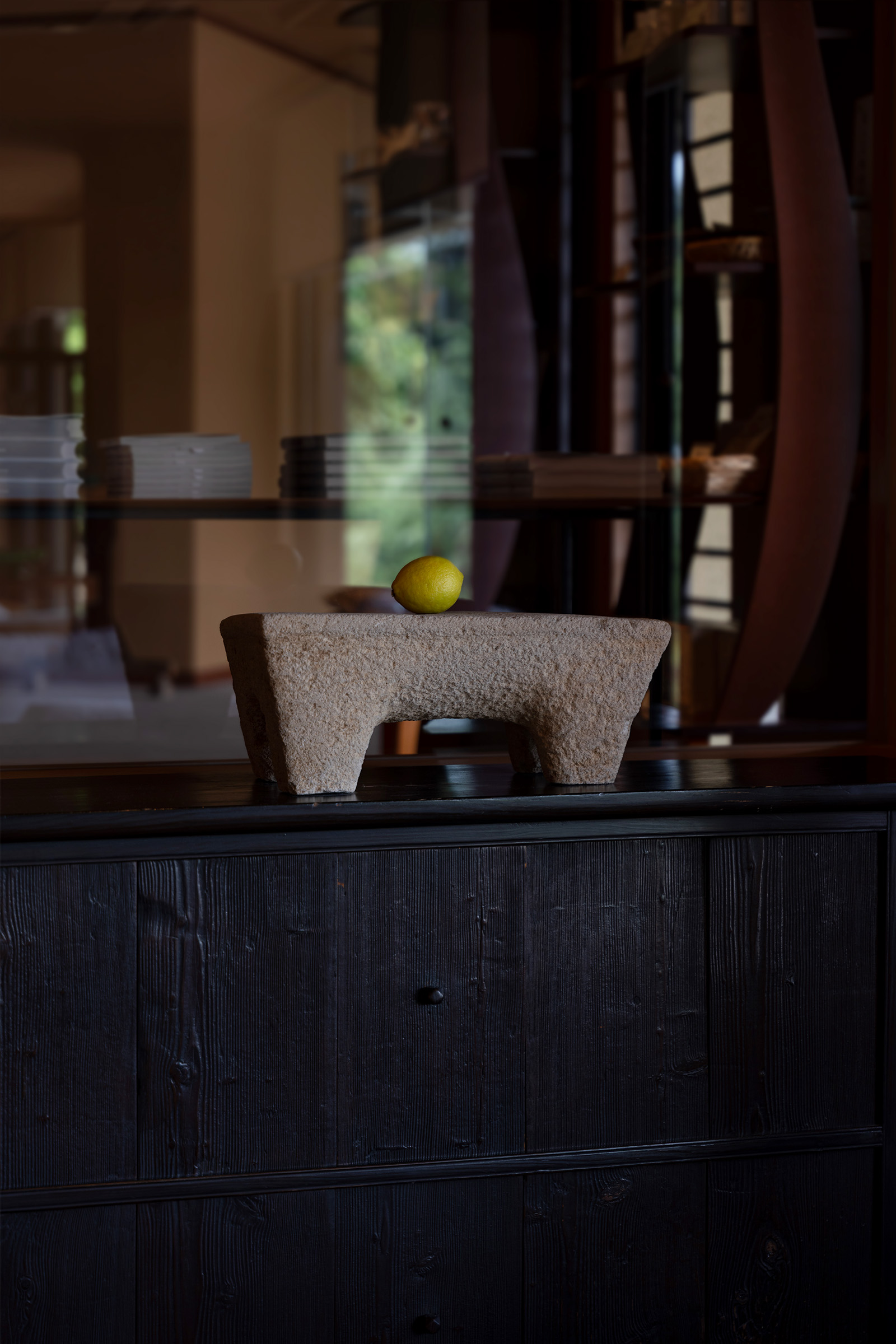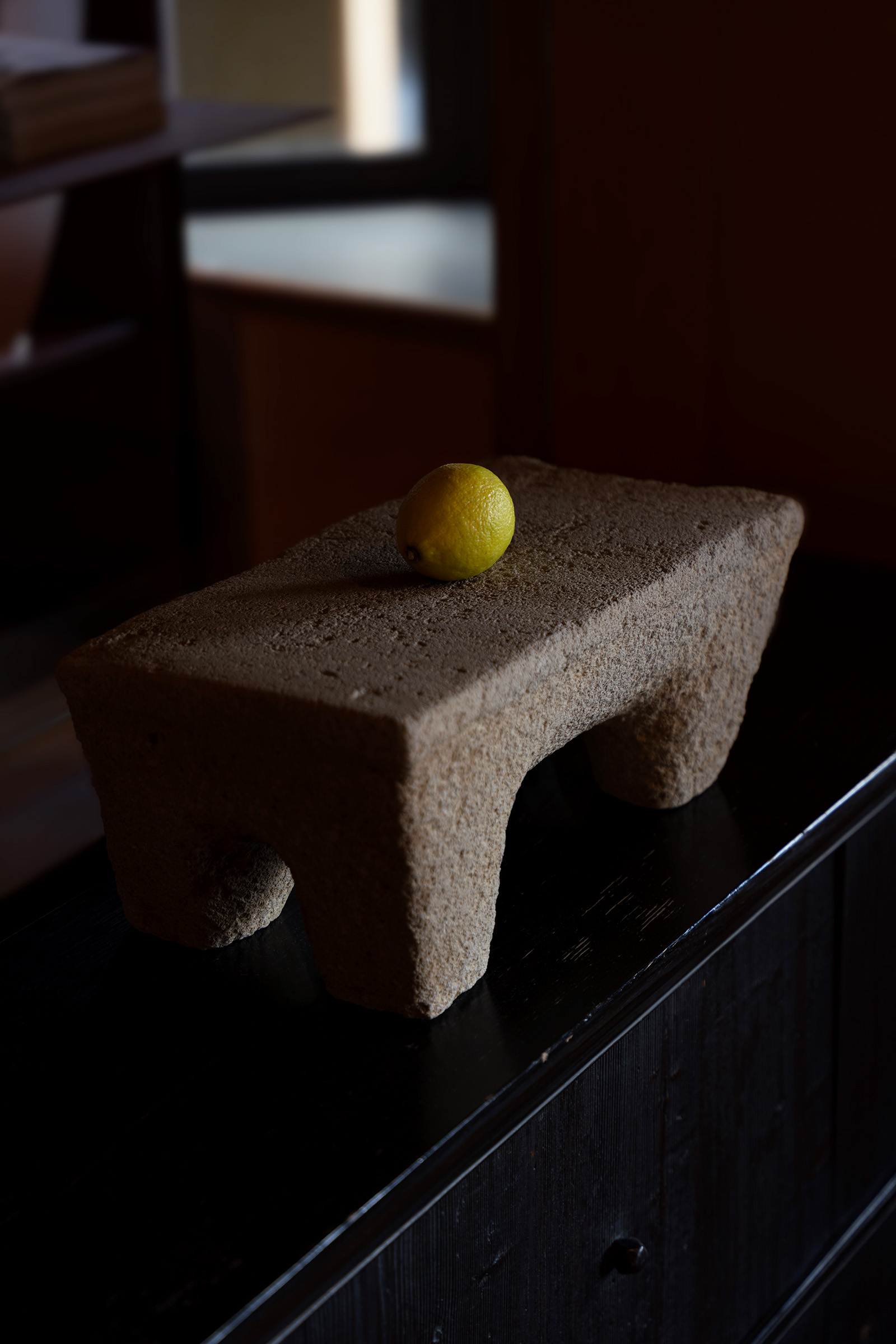

高山荘 華野のラウンジに足を踏み入れると、黒い木製シェルフの上にひっそりと佇む一品に目を奪われます。それは、インドネシア・ジャワ島で12〜15世紀頃に制作されたとされる「足付石器」です。
生活の道具として生まれたこの石器は、一切の装飾を持たず、ただ実用に徹するプリミティブな造形をしています。しかしその無骨さの中にこそ、時代を超えた造形美が宿り、見る者に不思議な存在感を与えてくれます。
ジャワ島は古くから交易の拠点として栄え、多様な文化や宗教が交錯した土地です。その中で作られた石器は、単なる生活道具にとどまらず、暮らしの中に根ざした美意識を映すものでもありました。この、足を持つ形状は安定性を高めるだけでなく、器を“特別なもの”として扱った証ともいえるでしょう。
華野ではこの足付石器を単体で置くだけではなく、上にレモンの実をひとつ飾ります。黒いシェルフ、石器の落ち着いたグレー、そしてレモンの鮮やかな黄色。その三者が絶妙なコントラストを生み出し、オブジェ全体がコンテンポラリーアート作品として完成するのです。
館主は「古代の道具に現代の感性を重ね合わせることで、アートは新しい息吹を得る」と語ります。歴史的な石器と日常の果実を組み合わせることで、時間を超えた対話が生まれ、ラウンジに訪れるお客様を温かく迎え入れる作品となっています。
古のジャワ島の文化と現代アートの美意識が融合するこの展示は、華野が大切にする“花とアートの宿”というコンセプトを象徴する存在といえるでしょう。
Fusion of Javanese Pedestal Stoneware and Contemporary Art
As you step into the lounge of Takayamaso Hanano, your eyes are drawn to a quiet yet commanding presence atop a black wooden shelf—a piece of pedestal stoneware believed to have been crafted on the island of Java, Indonesia, between the 12th and 15th centuries.
Originally created as a utilitarian object, the stoneware bears no decorative embellishment, embracing instead a purely functional, primitive form. Yet within its rugged simplicity lies a timeless sense of beauty—one that transcends eras and quietly captivates those who behold it.
Java has long prospered as a hub of trade, where diverse cultures and religions have intertwined. Stoneware produced in such a setting reflects not only daily life but also a deep-rooted aesthetic sensibility embedded in everyday existence. The addition of pedestal legs not only enhances stability but also signifies that the vessel was regarded as something special—an object of reverence within ordinary life.
At Hanano, the piece is not displayed alone. A single lemon rests gracefully atop it. The interplay of the black shelf, the subdued gray of the stoneware, and the vivid yellow of the fruit forms a striking contrast, transforming the composition into a work of contemporary art.
“The fusion of ancient tools with modern sensibility breathes new life into art,” says the proprietor. By pairing this centuries-old artifact with an everyday fruit, a silent dialogue emerges between past and present—one that warmly welcomes guests as they enter the lounge.
This display, uniting the cultural heritage of ancient Java with the refined spirit of modern art, stands as a fitting embodiment of Hanano’s guiding philosophy: “An inn of flowers and art.”